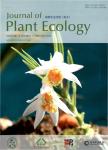Seed size-and density-related hidden treatments in common biodiversity experiments
作者机构:USDA Forest ServiceEastern Forest Environmental Threat Assessment Center200 WT Weaver BoulevardAshevilleNC 28804USA
出 版 物:《Journal of Plant Ecology》 (植物生态学报(英文版))
年 卷 期:2011年第4卷第3期
页 面:132-137页
核心收录:
学科分类:0710[理学-生物学] 071001[理学-植物学] 0830[工学-环境科学与工程(可授工学、理学、农学学位)] 07[理学] 0901[农学-作物学] 0902[农学-园艺学] 0713[理学-生态学]
基 金:US Geological Survey US Forest Service
主 题:experimental design productivity restoration seed number seed weight
摘 要:Aims With a few exceptions,most well-known field biodiversity experiments on ecosystem functioning have been conducted in plant communities(especially grasslands)in which different numbers of species are planted as *** these experiments,investigators have either kept the total seed weight or seed number constant across treatment ***,although in some cases attempts have been made to randomly choose species for planting from a designated species pool,the issue of possible‘hidden treatments’remains ***,the total and relative abundance among species and across treatments could still affect the *** study aims to determine whether treatments related to planted seed abundance and seed size may contribute to observed *** We re-analyzed data from four biodiversity experiments based on a common seeding design(*** treatments).Important Findings We show that diversity(richness)treatments usually involve a hidden treatment related to the planted seeds(***,number and seed size)that ultimately affect plant ***,the un-intended hidden treatment of seeding more seeds on more diverse plots contributes to the productivity to some *** derivative but often neglected hidden treatments are important for further improvement of experimental design and have significant implications in ecological restoration.



